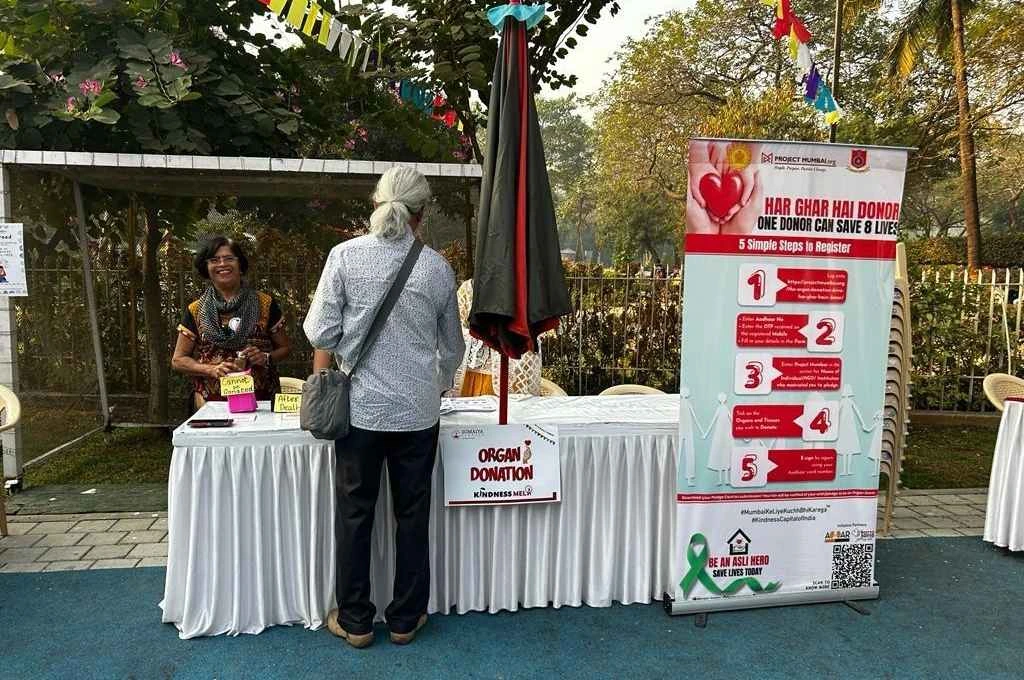In the last few years, there has been a shift in how India volunteers. Due to a mix of various factors—government policies such as CSR laws encouraging employee volunteering, the debilitating impact of the pandemic, and a growing awareness of social issues among the young—the interest in volunteering has increased in both kind and intensity.
What civil society needs is for this voluntarism to transform into citizen engagement.
When we started Project Mumbai in 2018, we aimed to bridge three gaps that we had perceived: First, there are several civic issues in Mumbai that concerned citizens are attempting to tackle, but their efforts are neither widely noticed nor replicated. In addition, while many appreciate the impact of civic work, they may be hesitant to actively participate, frequently expressing support while remaining on the sidelines. Second, many people would like to find solutions to the problems they face, but they do not know where to begin. Lastly, and most critically, we realised that while an overwhelmingly large number of people wanted to be part of the solution, there was a trust deficit—both in the system and in the people around.

We felt that volunteering could be the answer to these problems. In the six years since we started, we have learned some lessons on what it takes to make volunteering sustainable, potential roadblocks, and how nonprofits should approach volunteering.
Making volunteering sustainable
The difference between volunteering and being an engaged citizen is sustainability and showing up again and again. An engaged citizen demonstrates this by stepping up repeatedly, no matter the challenges—be it sun, rain, or potholes. Our effort has been to guide volunteers towards becoming engaged citizens with this sustained dedication. However, while there is an obvious uptick in volunteering during times of distress—our volunteer base increased during COVID-19, for instance—it needs to be more deeply ingrained in the culture and people’s habits and behaviours. Here are some things that have worked for us. As we began talking to more stakeholders, we realised these can work for others too.
1. Allowing communities to identify their problems and design solutions
Different regions, localities, neighbourhoods, and communities face different kinds of challenges. And in cities as large and as densely populated as Mumbai, which has 24 administrative wards inhabited by more than 21 million people, each of them is likely to have different problems they want solved.
Local communities generally know what the problem areas are, so they should be the first point of contact in learning more about this. As is the case with all things development-related, it is important to invite people in the community to design the solution.
Bringing in community members is important from the point of view of scale.
Listening to and learning from the locals leads to creative solutions. During COVID-19, for instance, when film shoots came to a halt, Project Mumbai used the vacant vanity vans to stock up on sanitary pad kits and biscuit packets for use by on-duty female police personnel.

Bringing in community members is also important from the point of view of scale. When more residents rally behind a cause that they are already concerned about, it gets the attention of their ward representative and local politicians. These numbers and political involvement feed into each other, make the narrative for problem-solving more compelling, and drive greater participative action. Interestingly, this also encourages the private sector to join the initiative. The politician wants to engage because it boosts their standing among their electorate, while piggybacking on the issue helps the corporates bolster their image even as it fulfils CSR mandates.
During the first lockdown, for instance, we realised that elderly people who were confined to their homes needed medicines and food parcels to be delivered to them. We had created WhatsApp groups for different localities in Mumbai, and started putting the word out for medicine and food delivery volunteers through these groups. Seeing the momentum, D-Mart—a chain of grocery stores—curated a mechanism for the contribution of food and essentials kits to the effort. Again, during COVID-19, the BMC was providing hospital beds and medicines, but there were people who had been impacted and were recovering at home; their medical needs were not being adequately met. So, we crowdsourced money to team up with Portea, a private company that offers home-based recovery solutions, while also informing the BMC about the areas we would be covering.
Khaana Chahiye, which works towards eliminating hunger and provides meals to those in need, and Hamara Station Hamari Shaan, a railway beautification drive, are other examples of public–private–people partnership.
Fostering relationships between people, the public sector, and the private sector is therefore essential for long-term success. But this success hinges on everyone being able to see what’s in it for them.
2. Sustaining volunteer engagement by letting them work on what they want
In order to engage citizens in something for a sustained period of time, one has to necessarily offer them activities that they would like to participate in as volunteers, or a cause that resonates with them.
In the last few years, interest in corporate and CSR volunteering has grown, which is an opportunity to onboard skilled volunteers. While this is a positive development, to make someone a truly engaged citizen requires directing their efforts towards a cause that is close to them. For example, asking a corporate volunteer what is going on in their neighbourhood, and then inquiring if they would like to do something about it. This stems from the understanding that every person is multi-dimensional. One could be the head of HR at their organisation, and also the mother of three children. So there needs to be a portfolio of activities—contributing a book to a local free library, mapping a road, painting a municipal school, or even pledging to donate one’s organs—that an individual can choose from based on their location and convenience as well as their interest.
It is important to make space for the recognition of their services as well, whether this is in the form of taking selfies or creating a logbook (digital or otherwise) to record the amount of time they’ve spent in volunteering and the various activities they’ve participated in.
3. Delegating responsibilities to citizen leaders
If nonprofits take the approach of creating citizen leaders when engaging people in volunteering, they can let the leaders manage the co-ordination and running of volunteering efforts. These can be people who know more about the cause or feel passionate about it. For instance, our organ donation programme is entirely run by senior citizens, who do the training workshops themselves. They may not know Project Mumbai as well as some of my colleagues do, but they definitely know more about the subject and feel more strongly about it. Similarly, our beach clean-ups are now being run by people who have consistently shown up and take an active interest in them. Letting citizens take charge also helps a nonprofit save its resources.

It’s not always smooth sailing
There have been times when things have not panned out as expected at Project Mumbai. Here are some of the challenges that we have faced over the years.
Not all your ideas will be readily accepted: Some time ago, we decided to start a helpdesk initiative where retirees would be placed with local police stations to greet visitors. This would achieve two things: First, visiting a police station can be an intimidating experience, and having civilians, especially elderly people, interact with visitors might make the process easier. Second, this would be a way for retired individuals to get out of the house and feel connected with their local community.
Account for any extra time that might be taken whenever bureaucracy is involved.
When we first approached the Mumbai police with this idea, they liked the concept. However, some of the officials we started working with were transferred, which necessitated initiating the whole process from scratch. Some of the new officials did not see the merit in this idea, making us realise how crucial it is to cast the net wide even when building deeper relationships with public authorities.
It is also important to account for any extra time that might be taken whenever bureaucracy is involved. On one occasion, a file for a recycled plastic garden took three months to move from one end to the other for permissions, and had to be returned because one officer had mistakenly written WS (Western Suburb) for the officer’s designation instead of ES (Eastern Suburb).
This also highlights the need for multiple ideas—if one doesn’t work out, there are others that can be tried out.
Building a sustainable volunteer base is difficult: We saw very high levels of engagement during COVID-19, but interest levels dropped once the worst of the pandemic had passed. In those years, we saw people joining to help out with several things—medicine and food delivery, putting together information on non-COVID-19 hospitals, tapping into their networks to raise funds, and other kinds of support. But rallying people post that period has taken a considerable amount of work.
There have been some positive changes since the pandemic, in that corporate volunteering has taken root, and there is increased awareness within the private sector of the kind of funding that organised volunteering requires. However, corporates can also be very picky when it comes to aligning with a cause.
Dealing with logistical and technical hurdles can be hard: Project Mumbai was a one-year-old organisation when the pandemic hit, so most of our organisational efforts at the beginning were carried out through WhatsApp groups. Over time, we have felt the need for a centralised database, and other support needed to build a sustainable organisation.
What nonprofits can do
1. Layer technology to drive engagement
Good volunteering is extremely human- and interaction-dependent. But to make it work, we need to leverage technology. And while investment in technology should not come at the cost of people—the human touch must be maintained—it should allow people to feel gratified by their role as engaged citizens. At Project Mumbai, we are working on a volunteering management platform, where people can see how much time they have spent volunteering. When they come to the venue, they can scan the QR code to register or start a session. Over time, they can see all the hours they have contributed and activities they have participated in. This leverages how people use smartphones and could work as a logbook.
2. Create ‘oh wow’ moments
Nonprofits need to market themselves better. Most nonprofits have powerful stories of change, but they are unable to tell these stories well. Marketing and storytelling are critical to creating sustained interest among citizens and expanding a nonprofit’s circle of volunteers. The more people know about the work of the nonprofit or the causes they are involved with, the greater the chances of them signing up for something they can relate to.
At Project Mumbai, we call this creating ‘oh wow’ moments. It stems from the belief that everyone has a hero in them, and that everyone wants to talk about what they are doing with pride. People also want to share their lives on social media. So our teams work on creating ‘oh wow’ opportunities in the simplest of areas, which bring joy to people. Some of this has also resulted in celebrities joining our initiatives, such as cricketer AB De Villiers, who was associated with our beach cleaning drive, and actor Dia Mirza, who was involved in painting the railway station.
3. Change how you look at volunteering
Many nonprofits already take in volunteers, but this number needs to increase. It is also worth considering if your nonprofit should have a separate vertical for volunteering. This is recommended especially if your organisation works with volunteers in several areas and is looking to make this engagement more meaningful. This is our fundamental premise—at Project Mumbai, volunteering is an element across all the areas we work in.
Creating incentives for volunteering is also key. Since volunteering is unpaid, people need to be incentivised to join and do more of it. For this, we are planning to create grades of volunteers: If they do 10 hours, they get placed in the bronze category. If they complete 20 hours of volunteering, they get a silver badge, and so on. Think of this like the IPL, where you get the purple cap for the most wickets and the orange cap for the most runs, and it serves as a badge of honour. This not only helps create leaders who assume charge of volunteering activities as time passes, but also gamifies the process.
4. Secure your funders’ support
Lastly, ensure a transparent partnership—where storytelling, risks, demands, and expectations are clearly spelled out—with your funders. Often, corporates expect a lot because they have to report to higher-ups. But organisations should be honest with them and clearly explain the risks. It is also important to do what you can do, rather than what your donors want you to do.
—
Know more
- Read this article to learn how to optimise volunteer engagement.
- Read this article to learn more about skill-based volunteering.




